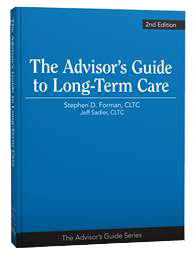Consumer & Price Protections
Long term care insurance has come a long way in the past few decades, thanks largely to the efforts of the NAIC (National Association of Insurance Commissioners) Senior Issues Task Force. This group helps bring regulatory consistency to the 50 states, and is responsible for promulgating a series of so-called "Model Acts"-- templates for the states to adopt in whole or in part.
Although much of their work today is directed at rate stability and transparency, early editions of the Model Act made successive improvements to the long term care policy we market today:
- Removal of the 3-day prior hospitalization requirement (that Medicare still employs)
- Removal of the requirement that skilled care be received before benefits could be payable for other types of care
- Requirement that all LTC plans offer home health care benefits
- Elimination of rates that use age-banding
- Requirement to offer 5% compound inflation
- Requirement to offer a non-forfeiture benefit (in other words, a benefit you would not forfeit if you stopped paying premiums)
- Consumer protections regarding pre-existing conditions
- Timely payment of claims
- Independent review of claims
Many consumer protections resulted from a specific-- and now famous-- law passed by Congress in 1996, the Health Insurance Portability & Accountability Act, or HIPAA (which went into effect 1/1/97). This law established an entire category of long term care product called "Tax Qualified" (or today simply "Qualified"), and with it, a host of criteria which must be met:
- Policies must be "guaranteed renewable" (ie rates can only be increased on a class and form basis)
- Establishment of a 30-day free look period
- Requirement that policies must be delivered within 30-days of issue
- Establishment of a standardized outline of coverage by which policies could be compared
- Establishment of rigorous training requirements in order to solicit LTC insurance
Finally, there are a few consumer protections whose significance may not be easily appreciated:
- The regulations around contestability have tilted the balance in favor of the consumer: after 2-years, a company cannot rescind your policy or refuse to pay a claim based on misstatements or misrepresentations made on the application unless it can prove outright fraud.
- Contingent nonforfeiture: now found in every policy, this chart sets a maximum threshold by age. If an insurer raises your rates above this threshold, a set of consequences are triggered. The contingent nonforfeiture provision (CNF) is designed to help ensure the adequacy of rates from the outset, and to make insurers think twice before filing steep increases in the future.
- MAE pricing: the term stands for "moderately adverse events" and is a requirement that carriers include an extra margin (or cushion) in their premiums to help ensure stability even in the face of evolving experience which is more adverse than original assumptions. MAE first began to appear in policies around 2003.
Believe it or not, the NAIC is not done with LTC insurance yet! The Task Force meets regularly, and continues to suggest ways to improve the safety and security of our industry.






